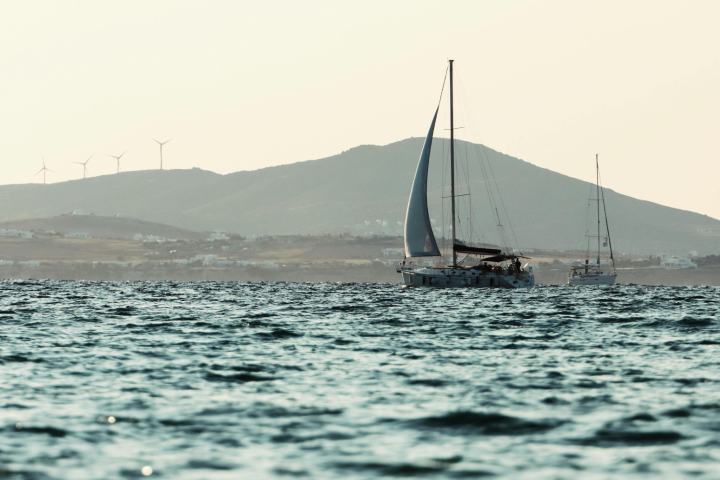The Aegean Sea and the Winds
The Aegean Sea and the Winds

March is the herald of spring for sailors in the northern hemisphere, when day and night are equal at the spring equinox and life is reborn and bursts forth. As life in nature comes alive in every corner, the dance of the winds and the scent of flowers are intoxicating. This month, we will tell you about the formation of the local names sailors give to winds in the Aegean and Marmara regions and how these names have evolved over time.
The sailors of the Aegean Sea, the land of islands, know what direction and speed the wind will take at any given time of day and how it will change, and they pass this knowledge down from generation to generation. In Izmir, during the hot summer days, the wind that comes from the sea and cools the people exhausted by the heat is called İmbat. This wind actually originates from the temperature difference between land and sea. When the sun rises, the land heats up, causing warm air to rise, and the resulting void is filled by cool sea air, creating a sea breeze that typically forms during the day. At night, as the land cools rapidly, warm air rising from the sea flows into the void created by the cooling land, sometimes in the form of strong showers. Sailors have named this the land breeze and take navigation and safety precautions accordingly.
Imbat is the name given to the sea breeze, regardless of the direction from which it blows. The origin of the word is the Latin “battuere,” meaning “to strike” or “to hit.” In other words, the air strikes or hits the land from the sea. According to known written records, it was first used in 1313. A person named Priest Pedro Marsili wrote it in his diary. The word is written as Embat in Catalan. Its Italian equivalent is imbatto, its Spanish equivalent is embate, and its Greek equivalent is embates.
The influence of Greek mythology has been significant in determining the names of wind directions in the Aegean. In Greek mythology, Poseidon, unable to tolerate the mischief of two of the sons of the dawn goddess Eos, banished one of the children to the north of the Aegean, to Thrace, and the other to Crete. The two boys’ quarrel intensified. The one living in the north, in Thrace, blew southward to attack his brother, while the one living in Crete blew northward in response. The brother living in the north is Boreas, and the one in the south is Notos. Over time, these words, which have transformed into “lodos” and “poyraz,” have also changed in meaning. In fact, the name of the northern wind is Boreas and the name of the southern wind is Notos.
These words were used in the Çaka Beylicate, which established the first Turkish navy in Izmir in 1081-1082. Çaka Bey was taken prisoner in a war in Anatolia and raised in the Istanbul palace. His fleet consisted of Turkish and Greek sailors. Over time, these words underwent changes among the sailors of the Marmara Sea. In the Marmara Sea, winds rarely blow directly from the north or south.
The use of the Hellenic language in maritime activities in the Marmara Sea, which was dominated by Constantinople, for many years caused these words to change and become the names of the prevailing winds, namely the northeast and southwest winds. The northeast wind became poyraz, and its opposite, the southwest wind, became lodos. Boreas continues to exist today as the male name Bora. However, its meaning has changed to evoke a storm.
Keşişleme is the name given to the southeast wind. If you look southeast from your boat somewhere in the middle of the Marmara Sea, you will see Uludağ. The old name of Uludağ used in the early years of the Republic era was “Keşiş Dağı.”
May the winds be favorable to you, and may the words of İlhan Şeşen and the husky voice of Leman Sam accompany you: “The wind that lifts the curtain of my window, the wind that stirs the seas into foamy waves…”
Quoted from Tayfun Timoçin.

